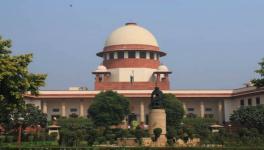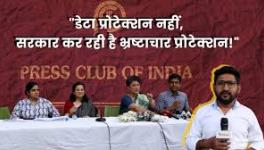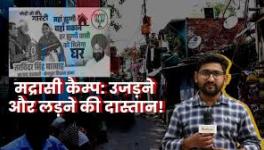Supreme Court Deals a Body Blow to Adivasi, Forest Dwellers’ Rights

Image Coutesy: Wikimedia Commons
In a ruling which exemplifies the many ills of judicial decision-making in the case of PILs in India, a three-judge bench of the Supreme Court, led by Justice Arun Mishra, directed the forced eviction of around two million people from forest areas spread across 17 States of India. As per the February 13 Order, which was made available to the public on February 20, the evictions have to be carried out latest by July 27, on which date the Chief Secretaries of the states concerned have to file sworn affidavits before the apex court.
What has rankled conservationists and environmentalists who care about equity is not only the cavalier attitude of the lawyers for the government in defending the rights of tribals and adivasis and other forest dwellers (of non-tribal origins) , but also the brazen manner in which the judges of the apex court have gone about adjudicating the case – by showing blatant disdain towards procedure and mandatory provisions of the Scheduled Tribes and Other Traditional Forest Dwellers (Recognition of Forest Rights) Act (FRA), 2006, a landmark legislation enacted by the United Progressive Alliance government. Moreover, what has caused grave consternation is the fact the top court believed the contentions of the petitioners (who believe in and practice a mode of exclusionary conservation which the British rulers had pioneered and implemented) without looking at internationally accepted principles.
The Petitions
Even when it was being drafted, the Forest Rights Act was criticised by the Union Environment Ministry and wildlife groups like Bombay Natural History Society, Wildlife Trust of India and Wildlife First. They said the Act would encouraged further encroachment on India’s already battered forestlands.
While the Environment Ministry backed down after the Bill became law on December 31, 2007, the Bombay Natural History Society and Wildlife First filed separate PILs before the Supreme Court challenging the Act’s constitutional validity. They said land distribution falls under the legislative competence of state governments, so Parliament could not distribute land through the Forest Rights Act. They also argued that the Centre had legislative competence to decide with respect to the trees and plants on the land, but not the land rights of dwellers.
Forest officials and hardline conservationists have now filed a total of nine court cases in an attempt to get the Forest Rights Act or orders under it struck down as unconstitutional. All the cases basically claim the following:
- The colonial authorities were fully sensitive to the needs of forest dwellers; the Indian Forest Act and its successor, the Wildlife Protection Act, provide adequate protections. The forest bureaucracy has correctly implemented the law, and even if they haven’t, all that is required is to order them to do so. All forest dwellers are therefore “encroachers.”
- By recognising the rights of forest dwellers, the Act will encourage false claims of rights over forests and forest lands, leading to forest destruction. The current situation, whereby such claims are settled by forest officials, should remain.
- The gram sabha is the deciding body on rights under the Act [NB: this is untrue], but the gram sabha is an unskilled open body in which all local residents, including claimants for rights, can participate. Recognition of rights should only be decided by officials.
- Being a later statute, this law is contrary to some parts of the Forest (Conservation) Act, the Wild Life (Protection) Act, and the Indian Forest Act, as well as some Supreme Court interim orders passed on the basis of those earlier Acts. But the existing system of forest management, the petitioners say, should be treated as part of the Constitution and cannot be changed.
- The phrase ‘Other Traditional Forest Dwellers’ (OTFD), which forms bulk of the claims, is a “nebulous” category of people not defined in the Constitution
Six of the nine court cases are cut and paste jobs of each other, filed in various High Courts by retired forest officers (and in one case by an ex-zamindar).
In January 2015, the Supreme Court transferred all the High Court cases to itself. As of April 2016, it is currently hearing the cases together. On February 1, 2016, the Supreme Court overturned the only order by any court that had interfered with the Act. A set of experts on the FRA have stoutly rejected the claims of the petitioners as “bogus” and “misleading”, made at the behest of retired members of the forest administration bureaucracy who care little about equity.
Forest rights activists say that rejection of claims is not grounds for believing a person has no right as the claims are often turned down due to “illegal intervention” by forest officers.
Shankar Gopalakrishnan, secretary of Campaign for Survival and Dignity, told NewsClick, “The main issue here is not environment versus people, but bureaucracy versus people. The question is not whether the environment should be protected, because people (who live in forest) are also fighting to protect the environment. The question is whether the forest officers should have life and death power.” This view was echoed by Tushar Dash of Land Conflict Watch.
The Affected
After the court order, more than 11 lakh families, whose claim is rejected under FRA, will have to move out of their homes by July 27, the next date of hearing. The court has said that the matter would be viewed seriously by the court if eviction isn’t carried out.
The number of affected families may increase as other states will also have to comply with the orders of the Supreme Court. The latest data (December 2018) available with the Ministry of Tribal Affairs (MoTA), which is the nodal ministry for FRA, shows that out of 42.19 lakh claims made, only 18.89 have been accepted. Therefore, there are more than 23 lakh tribal and forest dwelling families who can still face eviction. This number is more than double the number of families to be evicted by present court order.
According to data secured from Land Conflict Watch by NewsClick, the process of recognising rights has been abysmally implemented. Out of 41 lakh claims, 18 lakhs have been approved, 31 lakh are still being processed and 20 lakh have been rejected. However, as this report shows, rejection of claims does not mean it is the end of the road- there is a due process for appeals as laid down by Section 4(5) of the FRA and the Ministry of Tribal Affairs guidelines of July 2012, said Shomona Khanna, a senior lawyer who has worked closely with the government on defending the case in the Supreme Court.
Kanchi Kohli, a senior researcher on environment and ecology with the Centre for Policy Research, a Delhi-based think tank, told NewsClick that there are those who with the aid of land mafia have illegally encroached upon the land and misused the law. However, the administration needs to take a considered view, and the assumption that all those who claims have been rejected are encroachers is deeply problematic and unfortunate.
Khanna says that this view goes against international consensus and asks why the government did not take steps to provide for Critical Wildlife Areas (where coexistence with humans is not possible) as mandated by Section 4(2) of the Act? Is it because it plans to divert these areas for non-forest use, she asked.
Scant Regard for Procedure, Callous Lawyers
In 2008, the case started out as a challenge to the constitutionality of the FRA, but in the long drawn out process which went on for more than a decade, the court got sucked into the vortex of the disputed claims made by a section of environmentalists and wildlife experts.
In Scroll, there is a detailed report on how , after the BJP government came into power, and renowned jurist Fali Nariman was no longer leading the team defending the FRA in court, and after the Modi government’s lawyer Additional Solicitor General P.S. Narasimha resigned in October last year, it was left to a handful of empaneled lawyers who were clueless and felt like cows on thin ice while defending the matter, since the government did not brief them properly.
When the idea was proposed that those whose claims had been rejected should be evicted, Narasimha shot it down, said Shomona Khanna. “He asked what the court was adjudicating on,” the lawyer recalled. “Was it hearing a case on the constitutional validity of the Forest Rights Act or deciding whether a tribal with half a bigha of land somewhere should stay there or not?” In other words, could the court order states to evict forest dwellers by invoking a law whose validity had been challenged?”
But the larger fault lies elsewhere-- with how the courts rule on PILs. As legal scholar and academician Anuj Bhuwania writes in his book “Courting the People”, “In the name of the poor, a new kind of judicial process had emerged, entirely court led and managed, sometimes even initiated and implemented by its own machinery.” Illustrating his thesis with several Delhi-based PILs, he focuses not on the outcomes of these cases, but on “the profound injustice of the judicial process adopted in them”.
He argues further that while PIL fed the reforming zeal of the judiciary, it also provided a pliable weapon to express its class-based neoliberal worldview.
“The wrath of PIL is clearly a selective one”, concludes Bhuwania. PIL is a mirror image of the populist contemporary politics it assails, rendered the more dangerous for the absence of any of the protections that circumscribe populist political mobilisation in a democracy.
As of now, several democratic rights organisations and people’s movements have called for an ordinance to overturn the apex court ruling and return equity to the people. But it remains to be seen if the present government, with its penchant for neoliberal politics, pays heed to these demands.
The writer is an independent journalist based in Delhi, and specialises in reporting on legal, human rights and gender issues. The views are personal.
Get the latest reports & analysis with people's perspective on Protests, movements & deep analytical videos, discussions of the current affairs in your Telegram app. Subscribe to NewsClick's Telegram channel & get Real-Time updates on stories, as they get published on our website.
























